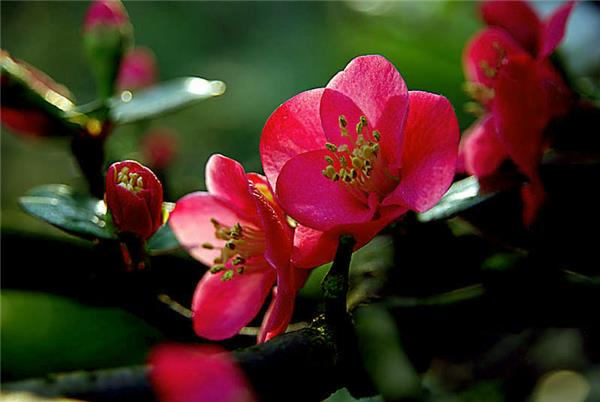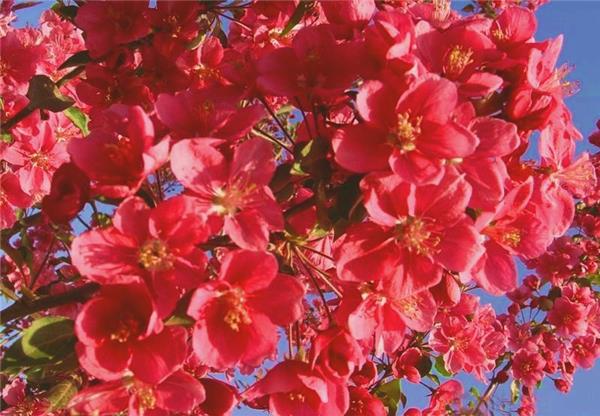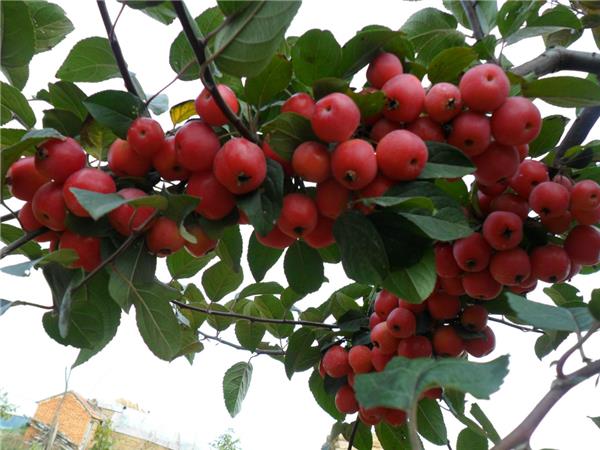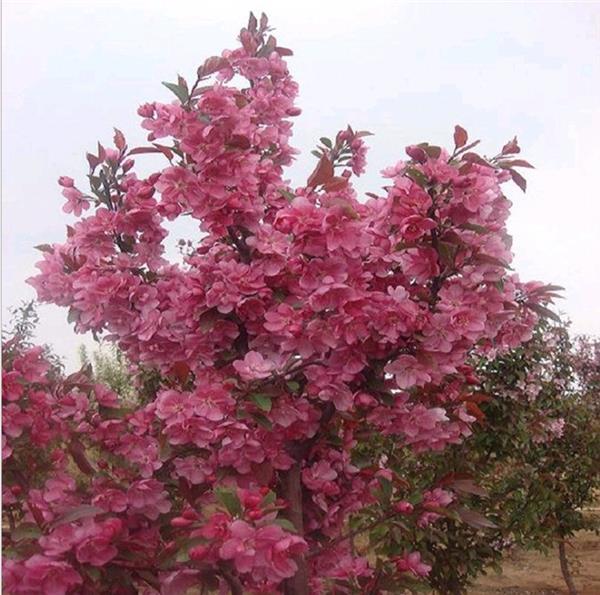Red Beauty Winter Red Begonia that won't fall even in Winter
Winter red crabapple is a kind of crabapple flower with a very long flowering period and can watch flowers in winter, so it can fill the gap of withered flowers in winter and is loved by many people, so let's get to know it together.

Introduction of Winter Red Begonia
Morphological characteristics: winter red crabapple is a rare green rare tree species for flower viewing and fruit appreciation in the world, and it was selected by the Greening Committee of the 2008 Olympic Games. Genus: Begonia, Rosaceae, Malus, deciduous small trees. The winter red crabapple tree can reach 5mur7 meters high; the crown is open, the branches are stout, the leaves are thick green, oval, and the apex is obtuse and serrated. Palmately lacerated, tomentose on both sides when young, old branches purple-brown, corymbose: flowers 5murmur12 clustered, calyx purplish red, pink in full bloom, flowering in the middle of the month, self-pollination, high fruit setting rate, single fruit weight 6mur10g, diameter 2-3 cm, ripening period in early November fruit from July: from green to bright golden yellow and gradually over to red with the deepening of the season. After maturity, the color is completely dark red, and the surface of the fruit is clean and shiny, very beautiful.

Growth habits: propagation methods are different according to different types, such as grafting, striping, cutting, ramet, sowing and propagation, etc. More like Yin and dampness, avoid high temperature in summer, grow poorly when the temperature is higher than 32 degrees Celsius, apply topdressing before flowering, and gradually increase the amount of water, while watering should be reduced after flowering. After seedlings are planted, the soil should be kept loose and fertile, and pond mud or fertile soil can be cultivated in the rhizosphere every autumn. Carry on a pruning in spring, cut off the withered and weak branches, keep the tree shape evacuated, ventilated and transparent. Among them, the four seasons crabapple with whisker root is suitable for pruning and reflowering after flowering.
Ornamental application: winter red crabapple does not drop fruit in winter and has been embellished until April of the following year. It is the variety with the longest ornamental period of begonia family fruit. Therefore, it perfectly solves the monotonous situation of winter in the landscaping landscape. It is a beautiful scenery to be able to bear a lot of fruit in the snow season.

Planting method of Winter Red Begonia
Reproduction: mainly sowing and reproduction, but also can be striped or grafted. Sowing, seed collection in October, with pericarp air-dried, sowing time to cut open the fruit, take out the seed; you can also take out the seed, sand storage for the winter, the following spring sowing. The seeds must be treated by low temperature stratification for 30 ~ 100 days before sowing in spring. Striping is mostly carried out in spring, the seedlings can climb to the ground and press into the soil, and the big seedlings can use the high-pressure method. Spring striping and root insertion. Begonia or seedlings can be used as rootstocks for grafting and cut in spring. Grafting before sprouting in spring or from July to September in autumn. Propagate separately before sprouting in spring or after defoliation in autumn and winter.
Soil: winter red crabapple is not very strict on the soil, and the sour land is the most suitable for planting winter red begonia. Soil renovation should be carried out properly after fertilization in autumn, in which cutting off roots can promote the growth of winter red begonia, and soil renovation can also kill pests hidden in the soil and reduce the occurrence of insect pests. attention should be paid to farming, especially in rainy areas and weedy environments. Prevent soil hardening, which will promote root respiration of winter red begonia. In order to obtain economic benefits from the cultivation of winter red begonia, it is necessary to consider the permeability and fertility of the soil. If the soil is not suitable for begonia, the cultivation of winter red begonia will be restricted.
Maintenance: the growth of winter red crabapple is strong, it hangs fruit two years after planting, and the meter diameter can reach 4.5 meters in three years, which is fruitful. The planting time should be carried out after falling leaves in autumn to before sprouting in early spring. Under the condition of cool climate and deep soil layer, it is best to prune strong branches in winter for the fruit of the next year. Mainly prevent aphids and heart-eating insects.

Winter red crabapple has beautiful plant shape, long flowering time, and has a high ornamental value, especially suitable for planting on both sides of the sidewalk, around the pavilion, the edge of the jungle, waterfront pool and so on, which can effectively enhance the beauty of the surrounding environment. Of course, it can also be cultivated in pots, but measures such as ventilation and shade must be done well in breeding.
Related
- Wuhan Hospital Iron Tree Blooming Result Was Instantly Frightened by the Gardener Master
- Which variety of camellia is the most fragrant and best? Which one do you like best?
- What is the small blue coat, the breeding methods and matters needing attention of the succulent plant
- Dormancy time and maintenance management of succulent plants during dormancy
- Minas succulent how to raise, Minas succulent plant pictures
- What are the varieties of winter succulent plants
- How to raise succulent plants in twelve rolls? let's take a look at some experience of breeding twelve rolls.
- Attention should be paid to water control for succulent plants during dormant period (winter and summer)
- Watering experience of twelve rolls of succulent plants
- Techniques for fertilizing succulent plants. An article will let you know how to fertilize succulent plants.



